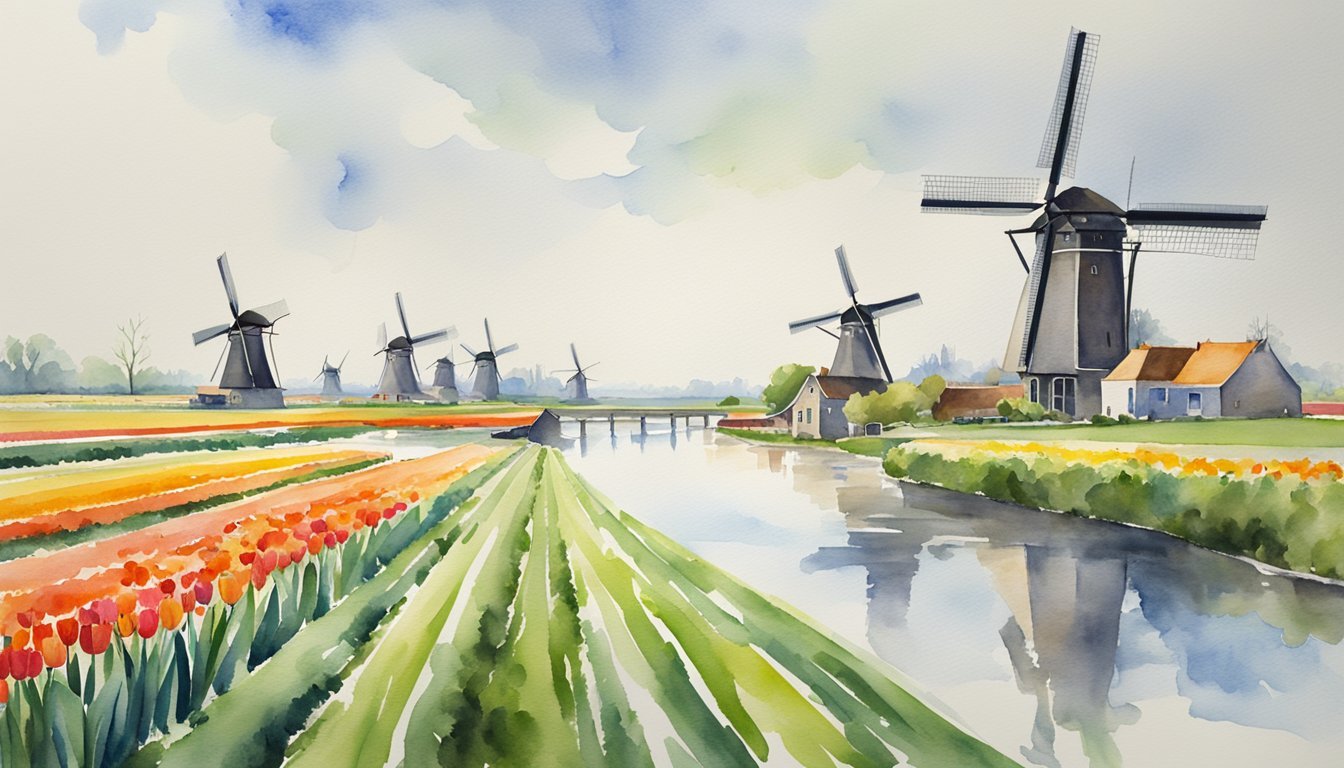Geographic and Political Overview
Location and Borders
The Netherlands, also known as Holland, is situated in northwestern Europe and is part of the Kingdom of the Netherlands. It shares its borders with Germany to the east and Belgium to the south, with a North Sea coastline to the north and west. The country has a significant flat and low-lying terrain, with some areas even located below sea level. This unique landscape is the result of centuries-long water and land management practices.
Government Structure
The Dutch political system is a parliamentary democracy with a constitutional monarchy. The government is divided into three main institutions: the Monarch, the Council of Ministers, and the States General (Dutch Parliament), which consists of the House of Representatives and the Senate. The Prime Minister is the head of the Dutch government, while the Monarch is a largely ceremonial role.
The Netherlands is divided into twelve provinces, which are then subdivided into municipalities. Each province has its own Provincial Council, whose members are elected by the residents.
Internationally, the Netherlands is a member of several important organizations, such as NATO, the OECD, and the European Union.
Constitution and Monarchy
The Dutch Constitution is the fundamental law of the Kingdom of the Netherlands, outlining the country’s governance structure and the rights and duties of its citizens. The Monarch’s role in Dutch politics is primarily ceremonial, as the Constitution confers most executive powers to the Council of Ministers, who are responsible for the day-to-day running of the Dutch government.
The Netherlands is a constitutional monarchy, meaning the Monarch serves as the ceremonial head of state. The current monarch represents continuity and national unity, participating in various official functions, including the annual opening of the Parliament and the appointment of the Prime Minister.
In conclusion, the Netherlands is an interesting blend of geographical features, political structures, and historical traditions. With its strategic location in northwestern Europe, a well-balanced governmental system, and active participation in global organizations, the country plays a significant role on the international stage.
Cultural and Economic Aspects

Demographics and Language
The Netherlands has a diverse population of around 17,151,228 individuals, with the ethnic Dutch comprising 76% of this population. The country has a high population density, with large urban municipalities. The official language is Dutch, spoken by almost everyone in the Netherlands, and is also an official language in Aruba, Brussels, Curaçao, Flanders, Sint Maarten, and Suriname. However, other languages are spoken as well, such as Frisian, Limburgish, Yiddish, Papiamento, Romani, and English. Among the religious affiliations in the Netherlands, Islam and Christianity coexist with a significant proportion of the population identifying as non-religious.
Economic Indicators
The Netherlands has a strong economy, with a GDP of $982.827 billion in 2021. It is a highly industrialized country and plays a central role in Western Europe’s economic life. Despite being relatively small compared to its neighbors, the Netherlands has a thriving agricultural sector, which is a specialized contributor to Dutch exports. In recent times, the Dutch Caribbean, including Bonaire, Saba, and the now-dissolved Netherlands Antilles, has contributed to the Kingdom of the Netherlands’ economic development.
History and Influence
Historically, the Netherlands has had a significant influence on global culture, trade, and politics. The Kingdom of the Netherlands was established in 1815, with King Willem-Alexander being the current reigning monarch. The nation has a rich colonial history, with former colonies such as Suriname, Indonesia, and various Caribbean territories. The influence of these colonies can still be seen today in the various cultural aspects of Dutch society.
The Netherlands managed to remain neutral during World War I but faced a devastating occupation by Germany in World War II. After the war, the country underwent a rapid recovery and became a founding member of various international organizations, such as the European Union, NATO, and the United Nations.
The highest point in the Netherlands, the Vaalserberg, is located at the border with Belgium and Germany, further emphasizing its central European position. Finally, the Dutch national anthem, Wilhelmus, is one of the oldest anthems in the world, reflecting the deep-rooted history of the country. With its resilient economy, diverse population, and rich cultural heritage, the Netherlands continues to make its mark on the world stage.

